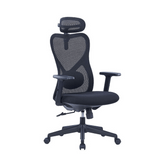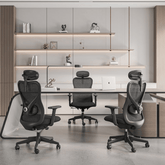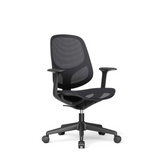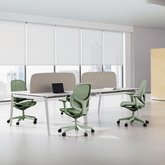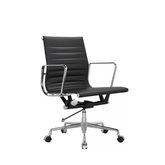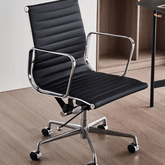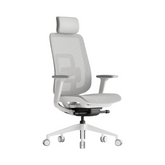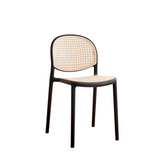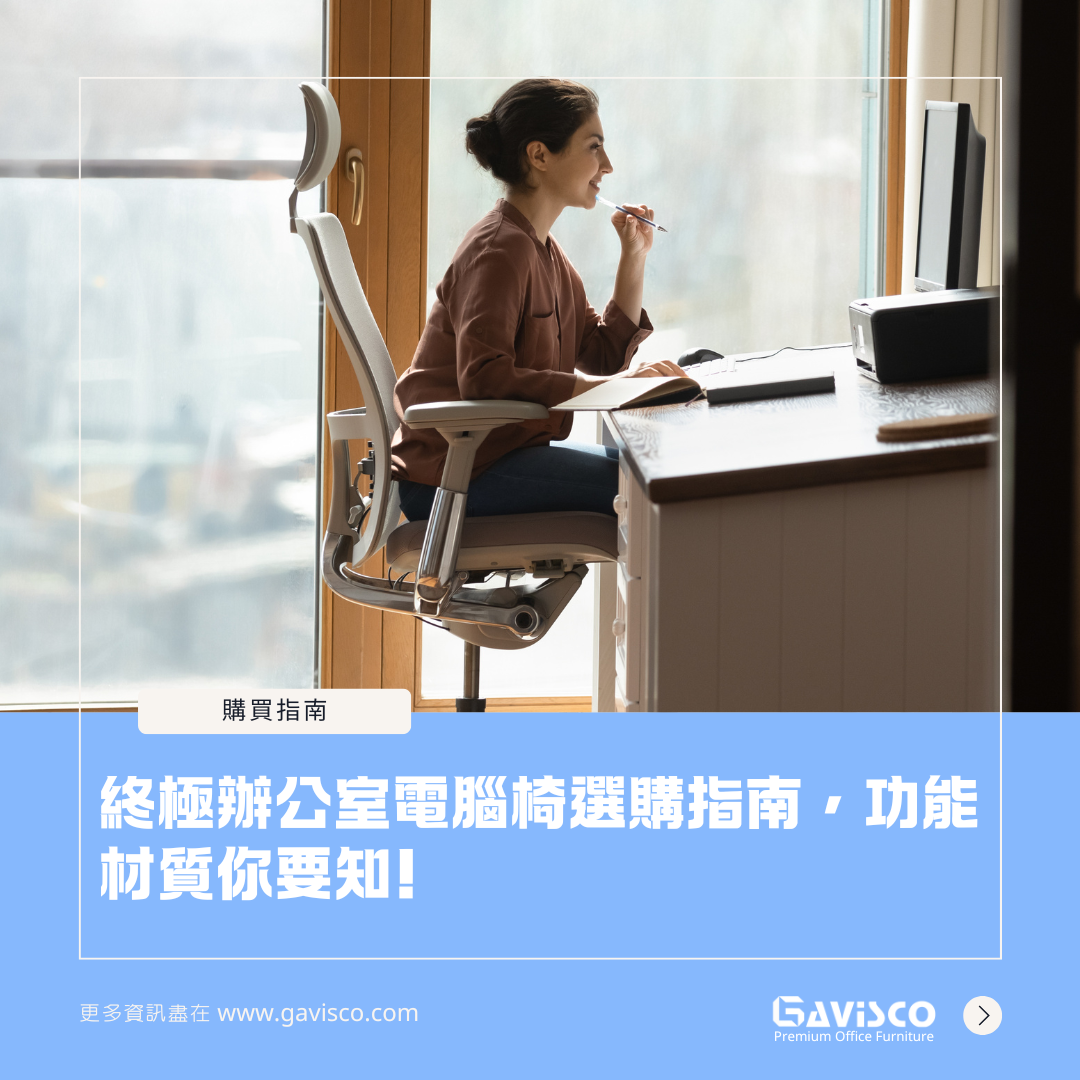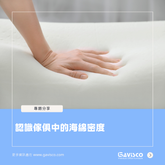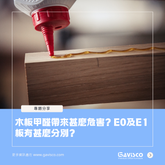The Ultimate Guide to Choosing The Best Ergonomic Office Chairs For Your Workspace
In the fast-paced and dynamic modern office landscape of Hong Kong, an office chair that blends comfort with ergonomic excellence stands out as a prized asset, elevating productivity and safeguarding employee well-being. It not only serves as a dependable work companion but also acts as a conduit that harmonizes physical ease with high-performance work environments. Amidst the plethora of office chair options available, the art of distinguishing and selecting a masterpiece that harmonizes aesthetics with exceptional ergonomic design has emerged as a critical concern for every professional in the corporate world.
When navigating the realm of office chairs, superficial attributes and brand allure should not be the sole focus. Instead, a deeper exploration into the chair's inherent ergonomic features, material quality, and specific criteria is essential. A premium office chair should function as a thoughtful custodian of our health, offering holistic support for our spine, muscles, and overall well-being.
Let's now embark on a journey to uncover the essential elements that define a truly exceptional office chair. By meticulously evaluating these facets, you will discover the perfect office chair tailored to your needs, transforming each seated moment into a delightful experience for both body and mind. This selection will infuse boundless vitality and ensure health assurance in your professional endeavors.
Seat Height Adjustment
Seat height adjustment is a fundamental feature in modern office chairs, allowing users to customize their seating position based on their height and desk level. This adjustment ensures that both feet rest comfortably on the floor, forming a healthy 90-degree angle at the knees while seated. Proper seat height alignment maintains the natural curve of the spine, evenly distributing upper body weight and reducing strain on the lower back and neck.
Correct seat height adjustment is crucial for preserving spinal health and promoting good posture, while incorrect settings can lead to issues like slouching or neck strain. This can result in discomfort, lower back pain, and potential long-term spinal problems. Ensuring proper seat height alignment is essential for enhancing comfort and minimizing the risk of posture-related complications during prolonged periods of sitting.

Seat Swivel and Sliding Functionality
Swivel and moving capabilities are essential features in office chairs, offering fundamental flexibility and ease of movement. These functions enable users to rotate 360 degrees and glide smoothly within the office space. Swivel functionality minimizes physical strain and the need for repetitive standing and turning. This not only reduces fatigue in the lower back and legs but also helps prevent accidents like sprains or strains that can occur from frequent movements. These mobile features enhance user comfort and efficiency in the workplace while promoting a safer and more ergonomic working environment.

Tilting and Adjustable Tilt Tension
A top-notch ergonomic office chair should include an elastic tilt function, enabling users to lean back comfortably to relieve the body pressure that builds up during prolonged sitting. This tilt mechanism operates through the interaction between the backrest and seat, typically controlled by a lever or rotating knob beneath the seat. These controls manage the backrest tilt angle and locking functions, allowing for personalized adjustments.
Advanced ergonomic chairs go a step further with features like tilt angle locking and tension adjustment. Tilt angle locking secures the backrest angle in place even when the user isn't seated, enhancing stability. Tension adjustment regulates the resistance of the backrest, catering to individuals who prefer a movable backrest that still offers solid support. Tension adjustment is commonly controlled by a rotating knob or cylindrical mechanism at the seat's base, providing a customizable experience.
Understanding these functions not only enhances comfort but also empowers users to optimize their seating experience for improved support and relaxation.

Adjustable Lumbar Support
The adjustability of lumbar support stands out as a pivotal feature in ergonomic chairs. Particularly for office workers with extended sitting hours, a computer chair offering proper lumbar support can significantly alleviate lower back strain and mitigate the risk of back pain. A well-designed lumbar cushion should contour to the natural curvature of the spine, typically situated in the small recess above the waistline and below the lower back.
A considerate ergonomic computer chair should provide options to adjust the backrest or lumbar support height. This customization empowers users to tailor the chair to their unique body needs, accommodating individuals of varying heights and weights, regardless of gender. By allowing for personalized lumbar support adjustments, these chairs promote comfort, proper posture, and spinal health during prolonged periods of seated work.

Seat Depth Adjustment
Seat depth adjustment represents an advanced ergonomic attribute that is not universally present in every computer chair and necessitates a specific chair base design. This feature holds significant importance for users of varied body types. By utilizing a sliding mechanism, individuals, regardless of height, can customize the seat depth to their preference.
An excessively long seat can exert pressure on the backs of the knees for shorter users, whereas a seat that is too short may not offer ample thigh support for taller individuals, leading to discomfort and pressure points. Hence, when choosing a chair, it is imperative to ensure that the seat depth is adjustable to ensure an optimal and tailored sitting experience for users of all statures. This adjustment not only enhances comfort but also promotes proper posture and reduces the risk of discomfort associated with prolonged sitting periods.

Synchro Tilt Mechanism
The Synchro Tilt mechanism stands out as a sophisticated ergonomic feature that demands a specific chair base design and incorporates advanced mechanisms. This mechanism harmonizes the tilt of the backrest with a subtle upward tilt of the seat, facilitating greater movement in the backrest compared to the seat.
By allowing the backrest to tilt more than the seat, this design maintains a stable horizontal position of the seat even during backrest adjustments. This innovative approach prevents the traditional rocking chair-style tilt that could result in awkward positions like facing the ceiling or having feet off the ground. The Synchro Tilt mechanism promotes a spacious sitting posture while ensuring a relatively parallel alignment with the ground, amplifying the stability and comfort of your seated position. This feature exemplifies how ergonomic design can enhance both comfort and functionality in a chair.

Adjustable Armrests
Armrests are a vital component of a computer chair, and the capacity to adjust their height represents a fundamental ergonomic feature that should not be underestimated when choosing a chair. Advanced ergonomic computer chairs offer 2D, 3D, 4D, or even 5D adjustment capabilities for armrests. Apart from height adjustment, these chairs can also modify the armrests by tilting them inward or outward, moving them forward or backward, and adjusting the tilt angle, enabling you to discover the most comfortable seating position.
This flexibility allows you to customize the armrests to suit your work demands and individual physical requirements, ensuring that your arms can relax comfortably on them, simplifying various tasks effortlessly. The optimal armrest adjustment angle is achieved when both hands rest flat on the desk, with the forearms forming approximately a 90-degree angle, providing the ideal ergonomic support for your arms. By fine-tuning the armrests in this manner, you can enhance comfort, reduce strain, and promote better posture during extended periods of seated work.

Headrest Adjustment
Headrests or neck rests are not commonly included in standard office computer chairs; however, selecting a high-back chair with a headrest is advisable to ensure ergonomic neck support. A well-designed headrest can enhance support and comfort for your head and neck, particularly when reclining in your chair. Premium headrests often feature height and angle adjustability, enabling you to position the headrest to keep your head aligned with the computer monitor, reducing neck strain caused by extended periods of looking downward.
In addition to adjusting the headrest height, you can fine-tune the tilt angle and position, referred to as 2D or 3D headrest adjustments. These versatile adjustments empower you to customize the headrest to your preferred position, promoting proper alignment of the head and neck to minimize discomfort and fatigue. Incorporating a headrest with adjustable features into your office chair setup can significantly enhance your comfort and support during long hours of seated work.

Seat Cushion and Upholstery Material
Aside from adjustment features, the seat cushion and upholstery material of an office chair are pivotal factors that significantly impact comfort. The choice of cushion material plays a direct role in the comfort experienced during prolonged periods of sitting. High-density memory foam cushions stand out for their exceptional support and resilience, molding to the user's body shape and posture to ensure even pressure distribution. This adaptability effectively reduces fatigue from extended sitting sessions. On the other hand, latex cushions are recognized for their innate breathability and antimicrobial properties. The minute pores in latex facilitate moisture expulsion, maintaining the cushion's dryness even in hot conditions or after extended use. This feature helps prevent dampness and heat buildup around the buttocks and thighs.
In terms of upholstery material, common options encompass mesh, fabric, and leather, with each material influencing the chair's comfort and breathability in distinct ways.
Mesh
-
Breathability: Mesh chairs stand out for their exceptional ventilation capabilities, guaranteeing a cool and comfortable experience even during extended periods of sitting. The open weave design of mesh enhances airflow, diminishing the likelihood of feeling stuffy, sweaty, or uncomfortable.
-
Resilience: Mesh materials are renowned for their softness and flexibility, enabling the chair to conform to your body movements and accommodate a range of body types. This superior flexibility fosters dynamic sitting postures, facilitating seamless transitions and adjustments to mitigate stiffness and fatigue from prolonged sitting.
-
Durability: Mesh chairs are typically robust, constructed using a variety of materials such as nylon, fabric fibers, rubber, and more. The mesh design retains its shape, resilience, and structural integrity even with consistent long-term use. This exceptional durability ensures that your investment in a mesh chair delivers enduring support and comfort over time.
Fabric
-
Comfort: Fabric chairs typically provide a softer and more flexible seating experience compared to mesh or leather chairs. The upholstered cushions in fabric chairs offer a cozy and warm sensation, with premium foam fillings delivering a plush feel akin to a sofa, making fabric office chairs an inviting option for extended periods of sitting.
-
Aesthetic Variety: Fabric chairs offer a wide range of design styles, allowing for customization of colors, patterns, and designs to harmonize with office decor and personal preferences. The aesthetic versatility of fabric chairs ensures that you can discover a high-quality chair that perfectly complements your aesthetic preferences.
-
Affordability: Fabric chairs are generally more budget-friendly than leather chairs, making them a popular choice for many individuals on a limited budget. You can acquire well-made fabric office chairs without exceeding your financial constraints.
Leather
-
Elegant Appearance: Leather chairs exude a refined and luxurious aesthetic, elevating the overall look of the office space. Premium leather materials convey a sense of professionalism and sophistication, making them a favored choice for executive offices and conference rooms.
-
Durability: Leather is known for its durability, capable of withstanding regular long-term use while retaining its appearance. The surface of leather chairs typically resists stains and spills, simplifying cleaning and maintenance compared to fabric-upholstered chairs.
-
Comfort: Leather chairs commonly offer a comfortable seating experience by combining plush cushioning with supportive features that adapt to your body over time. The natural breathability of leather enhances overall comfort, making it a popular choice for those seeking both style and comfort in their office seating.

An exceptional office chair seamlessly combines ergonomic expertise with cutting-edge technology. It should incorporate a range of meticulously crafted ergonomic features that precisely cater to and satisfy the user's body needs and preferences. When choosing a computer chair, it's crucial to take into account factors such as height, weight, work habits, and office environment, ensuring that the chair fits the body perfectly. Prioritize your health and consider it a vital asset in your professional journey.
As a premium office furniture provider in Hong Kong, Gavisco presents a diverse collection of over a hundred office chairs that align with the specific demands of Hong Kong workplaces. You can select the most appropriate computer chair based on your budget, functional necessities, material preferences, and more. Explore Gavisco's range of office chairs today, discover your ideal pick, and make a significant investment in enhancing your workplace health and productivity!
